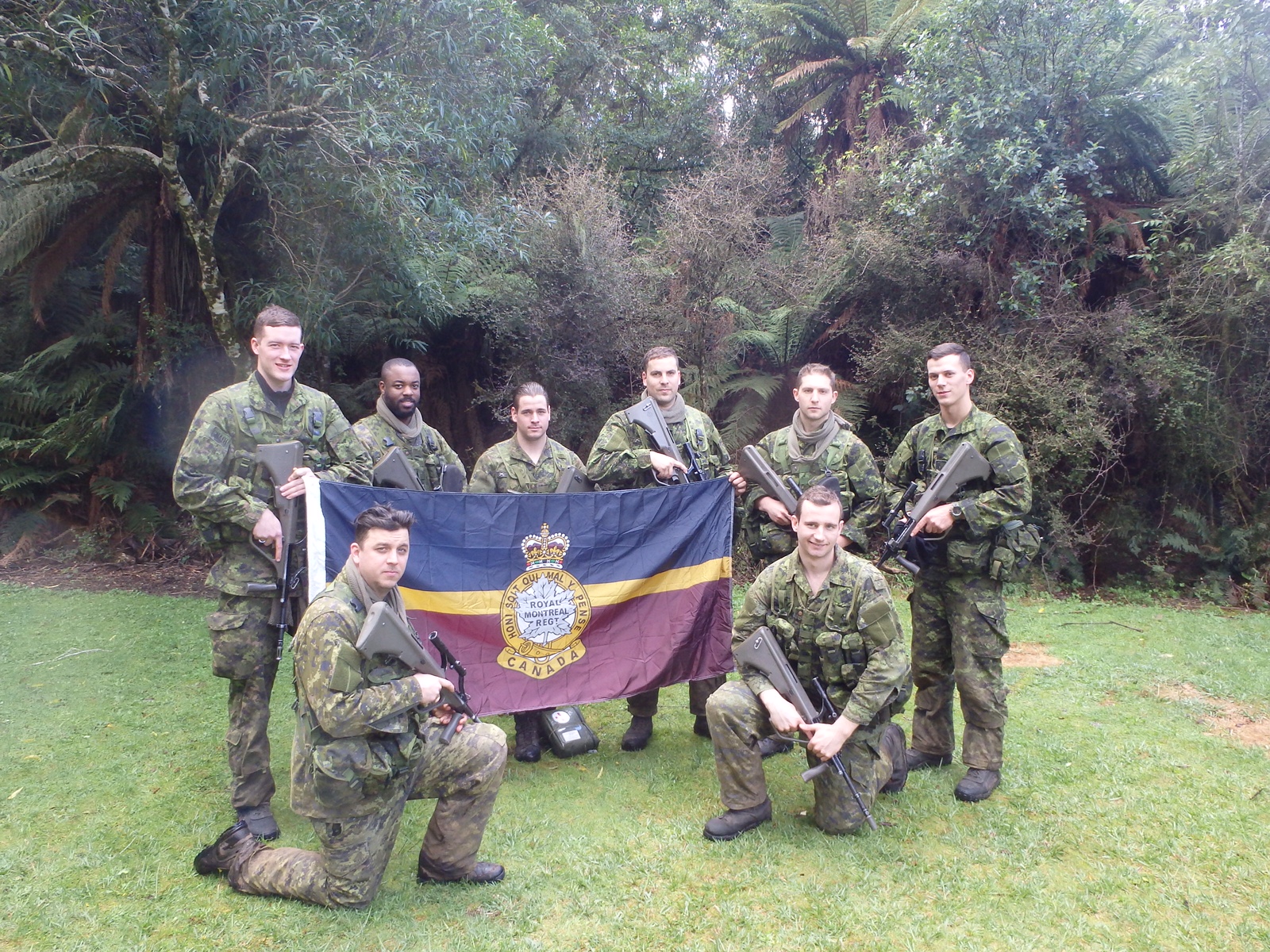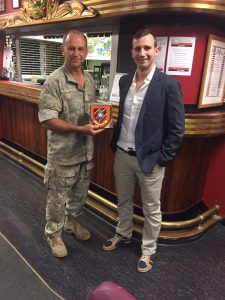Article written by Private Scott P. Lachance, RMR

AUCKLAND, NEW ZEALAND – April 2017: Eight members of the RMR participated in an 8 day field training exercise with members of 3/6 Royal New Zealand Infantry Battalion. The purpose of this international exchange was to enhance cooperation and interoperability between the CAF and the New Zealand Defence Forces. Furthermore, it allowed members of the RMR to engage in a survival training environment and be exposed to a variety of new subjects.

The RMR participated a regimental field exercise that was part of the RNZIR Infantry Mod 2 course which included navigation, sign awareness and lastly self-reliance. Module 2 is part of the 4 infantry modules the NZ reserve infantry undergo in order to develop their skillset. The course is developed in order to augment a soldier’s basic infantry skills and to allow one to become operable within the harsh New Zealand field environments.

The field portion was conducted in the ruthless jungle/rainforest environment which took place in Whirinaki Te Pua-a-Tane Conservation Park. The course was developed by a former RSM of the SAS: Warrant Officer Class One Radford; The WO1 had previously trained a significant amount of Special Forces units on escape & evasion tactics and human tracking methods. He is well known as the subject matter expert for tracking in many areas of the world. The training involved theoretical and practical lessons on navigation, navigation by sun/stars and by utilizing objects. Lessons on why things are seen, tracking, sign recognition/pace tracking, scent awareness, and incident awareness were also part of the course. Finally, booby trap & IED awareness, mobile observations/patrolling, track pursuit drills, principles of survival, snares/slaughter/skinning, and flora/ & fauna training were also part of the curriculum.
We had begun our training with a navigation circuit. Prior to beginning the nav circuit the RSM instructed us to return all our maps and protractors in order for us to nav using strictly our nav data sheets that we had created the night before the EX. Throughout the exercise, we were not allowed to use slings on the issued 5.56mm Steyr AUG NATO assault rifle, which made the navigation extensively difficult as there was not one flat piece of land within the field.

The RNZIR were quite amazed at how well the Canadian issued CADPAT combats vanish within their local forests. As opposed to our methods of operation, the RNZIR do not operate at night in field due to the density of their forests, as it extremely hazardous to navigate. Additionally, as we were navigating, the locals were hunting, and in one particular case, a deer was shot and killed 100m away from where a navigation detachment was situated in! This would be unthinkable at home!
Throughout the course we received an extensive amount of training on the local flora and fauna by a conservation specialist “1080” Bob. The level of knowledge that he transmitted was absolutely incredible. He was able to easily identify the properties of each plant situated in the New Zealand environment and instruct us on what the plant may be used for. He showed us which plants are edible, which could be used to speed up your metabolism, which plants may prevent infection, constipation and even which may be used as aphrodisiacs.

Towards the end of the course we began our self-reliance training. Prior to beginning the self-reliance portion we were ordered to stand in a single file by the RSM where we were stripped of our tac-vests and rucksack, then told to get into bare combats with lifas only. We were allowed to wear our flax cord as a belt, which we wove ourselves on our free time. Prior to our departure, the RSM allocated 1 person per det, only 30 seconds to retrieve 3 items of choice from any given tac-vest. Therefore, we were left with a cup canteen, a compass and a knife for our five man det. No food, no water and no rain gear. Upon being dropped off at our sites we begun to build our shelters using ferns and local forest materials. It was extensively difficult to get fires lit as we had been hit with the remnants of the tropical cyclone, Debbie, from Australia, to which we received 3 months of rain in solely a 24 hour period.
The self-reliance portion completed the second module of the RNZIR development course. We pulled out of the training area and relocated to Rotorua Army Centre where we cleaned and returned our Steyr’s and begun the leave segment of our deployment.

